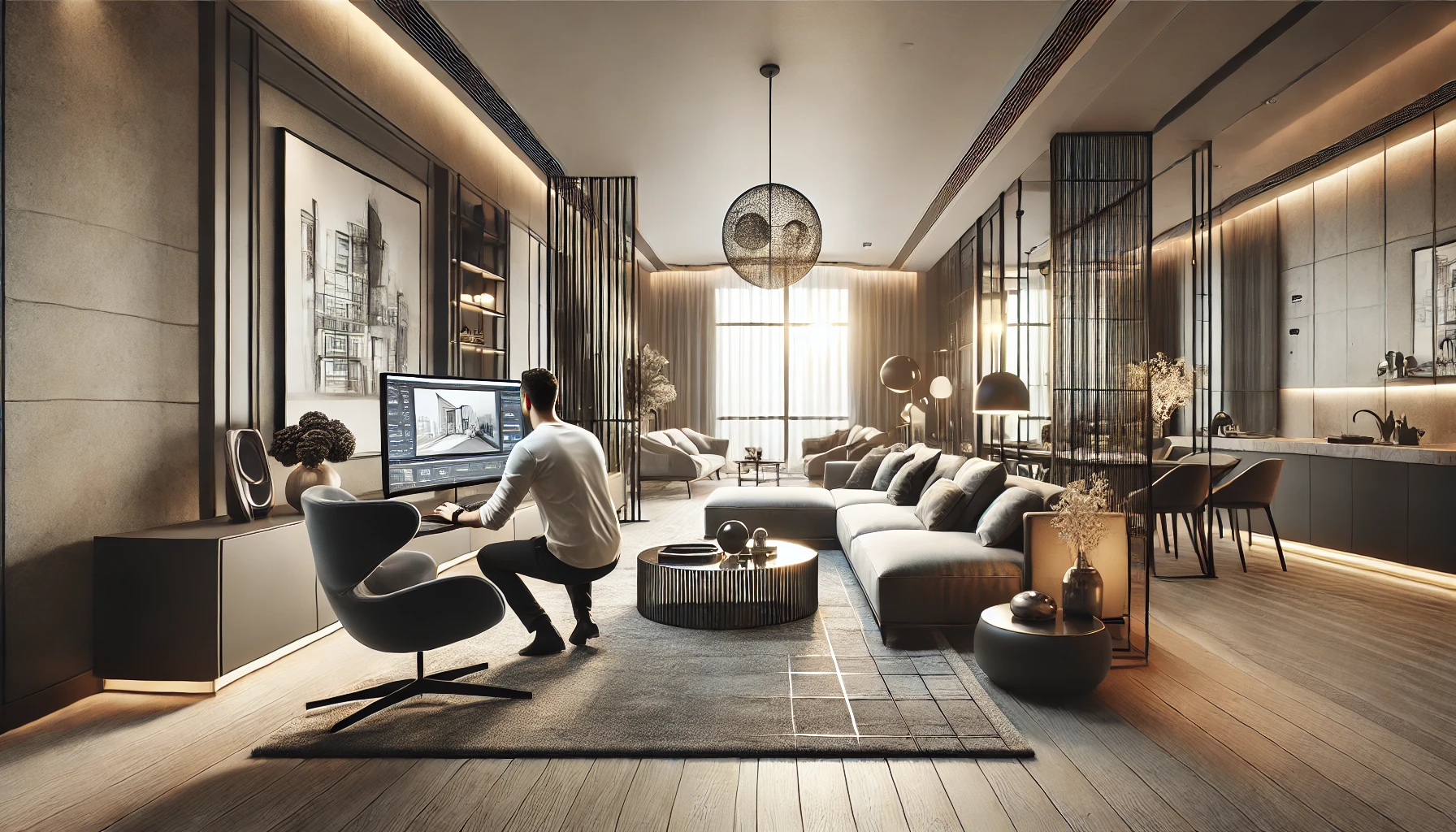The Role of 3D Interior Rendering in Creating Stunning Spaces
Interior design is both an art and a science, requiring creativity, technical precision, and the ability to translate ideas into reality. However, communicating design concepts clearly to clients can be challenging. This is where 3D interior rendering has revolutionized the industry, transforming abstract ideas into vivid, lifelike visuals that simplify the decision-making process.

Why 3D Interior Rendering Has Become Essential
Traditional 2D sketches and blueprints often leave clients struggling to visualize the end result. Even mood boards, while helpful, rarely capture the depth, proportions, and lighting of a real space. With 3D interior rendering, designers can present hyper-realistic images that illustrate the finished look with remarkable accuracy.
According to a study by the National Association of Realtors, 83% of potential buyers consider visual presentations critical when evaluating home designs. This growing demand for immersive visuals highlights the rising importance of 3D interior rendering in both residential and commercial design.
Key Advantages of 3D Interior Rendering
The adoption of 3D rendering technology offers a variety of benefits for designers, clients, and developers:
- Enhanced Visualization: Clients can view detailed representations of colors, materials, and layouts in realistic settings. This eliminates guesswork and builds confidence in design choices.
- Accurate Spatial Planning: 3D models help designers analyze furniture placement, ensuring a seamless flow within the space.
- Faster Design Revisions: Changes to color schemes, textures, or layouts can be adjusted digitally, avoiding costly mistakes during construction.
- Improved Communication: Visualizing design concepts in 3D bridges the gap between designers, contractors, and clients.
- Stronger Marketing Impact: Real estate agents and developers use 3D renderings to showcase properties with enhanced appeal.
Key Elements That Define Quality 3D Interior Rendering
To create captivating and realistic 3D visuals, designers must focus on several essential elements:
- Lighting and Shadows: Accurate lighting, whether natural or artificial, enhances realism by showcasing depth, mood, and texture.
- High-Resolution Textures: Fine details like wood grains, fabric weaves, and metal finishes add authenticity to visual renderings.
- Proportions and Scale: Maintaining proper dimensions ensures designs appear functional and realistic.
- Furniture and Decor: Strategically placed furnishings create a cohesive and inviting atmosphere.
- Color Balance: Correct color grading prevents oversaturated or dull tones that can diminish the visual impact.
How 3D Interior Rendering Enhances Project Management
3D interior rendering not only elevates design presentations but also improves workflow and project execution. By integrating 3D visualizations into the planning process, designers can:
- Identify potential design flaws early
- Test multiple design concepts without physically altering the space
- Collaborate with contractors by providing clear visual references
- Present interactive walk-throughs using virtual reality (VR) tools
As the famous architect Frank Lloyd Wright once said, "The space within becomes the reality of the building." This philosophy is beautifully captured in 3D interior rendering, where designers bring empty spaces to life with realistic detail and precision.
Real-World Applications of 3D Interior Rendering
3D rendering has become a vital tool across numerous industries:
- Residential Design: Homeowners can visualize remodeled kitchens, living rooms, and bedrooms before committing to changes.
- Commercial Spaces: Retail stores, offices, and hospitality venues are increasingly planned with 3D visualizations for improved layouts.
- Real Estate Marketing: Developers create engaging visual content for listings, brochures, and websites to attract buyers.
- Event Planning: Designers use 3D renderings to map out seating arrangements, decor, and stage design for conferences, weddings, and more.
Trends in 3D Interior Rendering for 2025
As technology evolves, 3D interior rendering continues to advance with exciting new trends:
- AI-Enhanced Design: Artificial intelligence now aids in generating realistic textures and predicting optimal furniture arrangements.
- Interactive VR Experiences: Clients can explore spaces virtually, gaining a deeper understanding of the design's functionality.
- Photorealistic Detailing: Enhanced material libraries and lighting tools allow for near-perfect realism in visualizations.
Final Thoughts
3D interior rendering has become a game-changer in the world of design. By combining technical precision with artistic creativity, it empowers designers to craft immersive visuals that leave no room for guesswork. Whether transforming a cozy home or planning a luxurious office space, visualization services like those offered by https://render-vision.com/ ensure that ideas are communicated clearly, projects stay on track, and clients feel confident in their investment.
By embracing 3D interior rendering, designers can inspire, inform, and impress — all while creating spaces that are truly unforgettable.
Published 3/14/25